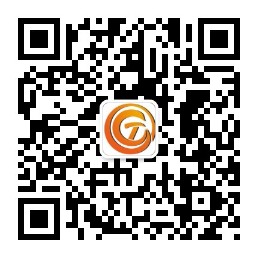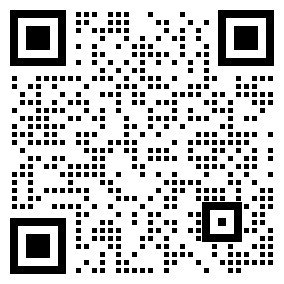Introduction:The emergence of drones has provided a lot of convenience for people's lives, and has been widely used in all walks of life. But its too short endurance has been a headache for researchers, and the UAV mainly relies on six kinds of power to complete complex work.
The emergence of drones has provided a lot of convenience for people's lives, and has been widely used in all walks of life. But its too short endurance has been a headache for researchers, and the UAV mainly relies on six kinds of power to complete complex work.
1, lithium battery: most drones are installed with lithium batteries, but the effect can only maintain about 20 minutes, and often need to disassemble, replace the battery, very time-consuming and laborious. In response to this phenomenon, the researchers explored two new sources of power that greatly improved the efficiency of drones.
2, hydrogen fuel cell: hydrogen fuel cell instead of lithium battery, can support the UAV continuous operation for two hours, and charging is very fast;
3, laser transmitter: Laser transmitter for the UAV power supply, the laser beam launched from the ground is converted into power by the receiver on the fuselage, almost can support the UAV work all the time.
4, solar power generation: the use of solar power drones are usually installed at the same time lithium batteries and solar cells, when there is sunlight, solar energy can be used to provide flight power, lithium batteries are used as backup batteries.
5, internal combustion engine power generation: The use of internal combustion engine power generation can support the drone to fly at a speed of 100 kilometers per hour for 1 hour, but loud noise and safety risks, because there are flammable gases in the drone.
6, wired cable power supply: the use of wired cable power supply can almost make the drone run permanently, and can also speed up the transmission of data to the computer, but due to the limitation of wired connection, it can not complete long-distance flight.
The two power sources of hydrogen fuel cell and laser emitter are more favored by research and development groups because of their significant effects and high safety factor, and can also provide inspiration for the power source exploration of other aircraft in the future.
In addition, as the brain that connects all devices, the UAV flight control has more and more types of interfaces, many novices are discouraged, and old hands often have a blank face. What are the common interfaces, and what are they used for on drones?
PWM:
This is the first interface that all model airplanes and drones can't live without. Single-line signal, periodically send a positive pulse, change the pulse width as a way to transmit information, a pin transmits a channel, often with ground and power lines can control a steering gear or an electrical regulator, is the first interface that needs to be understood when a drone or model aircraft enters the door. The advantage is simple, stable transmission of a scalable signal, the disadvantage is low speed, the current common standard is 50 times per second or 300 to 400 times.
PPM:
It is an upgraded version of PWM, that is, each signal cycle becomes a combination of multiple pulse widths to transmit changes in multiple channels at the same time. In the early days, it was also used for remote control radio signals and aircraft simulator signals, and now it is mostly used for receiver and flight control connection, with a lot of PPM signal output receivers, it is necessary for the entry of drones, and those with converters are to take off their pants and fart. Its advantage is stable transmission of multiple channels, the disadvantage is slower.S.BUS:
It is a protocol designed by Japanese remote control manufacturer FUTABA to transmit multi-channel information with a single channel digital signal, with only one signal pin and a reference ground wire, supporting the HUB expansion of multiple steering gear and electrical connection on a signal source, so S.BUS is actually a bus, and its principle is actually a change of serial port protocol. The specific protocol can be referred to the article I wrote on Baidu library "PX4 flight control development notes - Chapter 5: PWM, PPM, S.US and DSM2". Its advantage is pure digital signal, very reliable, with bus function. The defect is less compatible with the manufacturer's technology. At present, it is the best choice for flight control connected receiver.
Relay:
In fact, it is a digital IO signal, with only two states of 0 and 1, which exists in the flight control certain pins for automatic control of the camera shutter and pesticide nozzle. The advantage is reliable, the disadvantage is the information is very small, waste of resources and no calibration and other functions.
Serial Port:
Serial port is the most common device interface in the field of control, and the hardware forms are TTL, 232,422,485. TTL is the basic signal, a common three-pin usage, a needle for the signal input called RX, a needle for the signal output called TX, the other needle for the signal reference ground wire. Generally 0 volts and 3-5 volts indicate 0 and 1, the flight control comes with this serial port, and there will be many, for connecting multiple devices, PIXHAWK flight control has 5. The TTL signal has a low voltage, which is not suitable for long-distance transmission of more than 1 meter, so the 232 interface is developed, using positive and negative levels to indicate 0 and 1, which is the same as TTL, greatly extending the transmission dist
So the development of 422 interface, RX and TX each pin into a positive and negative voltage of a pair of signal lines at the same time jump, so that the interference signal is cleverly offset, transmission distance and speed double leap, but the need for 5 lines, to debugging caused a lot of trouble, at present only military products to use this serial port. 485 serial port is a combination of 232 and 422 advantages, the use of a pair of positive and negative voltage signal lines both send and receive, but he needs an additional signal control transceiver conversion, 485 bus with bus characteristics, you can connect multiple devices on two lines and ground lines, but transceiver, piece selection, arbitration, calibration and other work need you to write programs to coordinate, the workload is huge. Few people use it now.
SPI:
This is a high-speed interface for on-board communication, using a master-slave design, and specialized clock lines, each SPI has 4 pins master in from out, master out from in, clock and ground. The master device is responsible for managing information, clock synchronization, and all device communication. An SPI can connect multiple devices, but each device must have a slice selection. Because of the clock line, it is easy to achieve synchronous communication of all devices, and because of its stability and high-speed characteristics, it is used to connect all sensors to the main MCU on the flight control board.
I2C:
It's actually I squared C, which is the bus used to connect high-speed devices on the board. Has three signal lines, signal, clock and ground. It is also a master-slave design with a synchronous design of a clock, but the signal line needs to undertake multiple device inputs and outputs, and the master device is managed. All devices on the I2C come with an address, or tag, that the primary device uses to identify the device. It is used to connect many devices of low importance in flight control, such as indicator lights, magnetic compass, airspeed, ultrasonic, laser ranging, etc. There are actually manufacturers to save time by using this bus to connect multiple switches, which is very dangerous, because the 3-5v level is easy to be interfered with in long-distance transmission.
CAN:
The earliest bus interface designed for automobiles is said to be current transmission, so the anti-interference performance is strong, and it is specially used for multiple long-distance transmission between equipment in a large interference environment. There are only two signal lines, H and L, on which all devices are connected, and the bus chip is responsible for arbitration. This is actually the best choice for the equipment on the UAV, especially the multi-rotor electrical modulation, but due to its complexity and the cost of the interface chip, relatively few people use, PIXHAWK flight control and ESC32 electrical modulation have had the interface many years ago, so far no one has asked.
AD:
The analog-to-digital conversion interface, which is easy to be interfered with, still exists, and the way to use is to measure voltage. At present, flight control is used to measure voltage and current, which is low cost and can be used on small drones. Other range detection equipment is still in use, but has been basically on the brink of elimination, the effect is far less than digital equipment, but the cost is lower, such as airspeed and ultrasonic.
SDIO:
It is used to connect SD card or TF card for flight data recording. Because the TF card is widely used, the cost is low, and the capacity and speed are satisfactory, it has gradually become an essential equipment for advanced flight control, which is used for flight recording, accident analysis, fault diagnosis and so on.
USB:
The civil bus interface, which can connect multiple devices through the HUB, can be said to be a perfect interface. However, its protocol is too complex, the programming workload is very large, the interface connection form is easy to cause problems, must use special wire, and can not exceed 2 meters. In flight control, it is mainly used for ground debugging, reading and writing parameters and other ground operations.
免责声明: 本文章转自其它平台,并不代表本站观点及立场。若有侵权或异议,请联系我们删除。谢谢! Disclaimer: This article is reproduced from other platforms and does not represent the views or positions of this website. If there is any infringement or objection, please contact us to delete it. thank you! |


